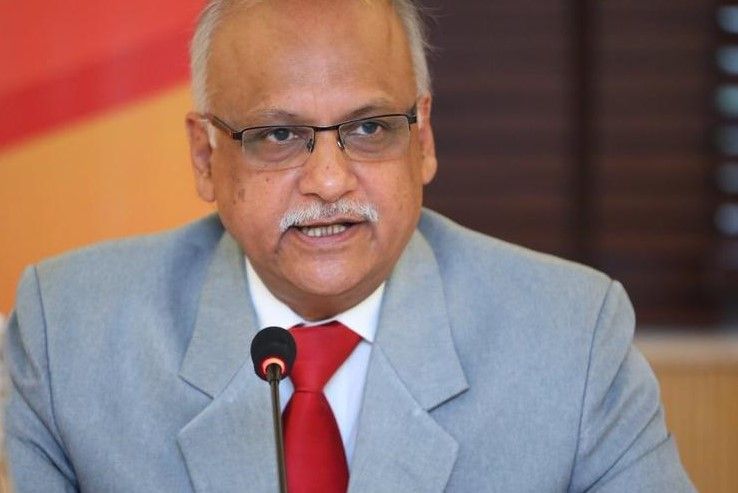PLA is as good as any professional army – DG, CCCS
By Rohit Srivastava
As India and China are disengaging in North Ladakh, IDI spoke with Lt. Gen SL Narasimhan (Retd), Director General, Centre of Contemporary China Studies (CCCS), Ministry of External Affairs and member National Security Advisory Board, on various aspects of threats and challenges from China.

IDI- Could you please summarise (for the record) the events of the last two months on LAC?
SL - PLA initiated multiple face-offs in the month of May 2020 at Pangong Tso, Nakula (Sikkim) and Galwan Valley. These face-offs resulted in violent behaviour and both sides suffered injuries. After the first day in all these places, there was no violence. However, the situation remained tense. Thereafter, ground level and higher military commanders level talks were on. The major general level talks on 02 June resulted in a corps commander level(Lt Gen) talks on 06 June. During this talk, a consensus was reached on disengagement. In the process of disengagement, an incident took place between Indian and Chinese troops in the area of Patrol Point 14 in the Galwan Valley on 15 June 20.
The incident was very violent and 20 Indian soldiers including a colonel rank officer who was the commanding officer of the battalion lost their lives. The Chinese side also suffered a substantial number of casualties including the commanding officer on the Chinese side.
Following this Dr S Jaishankar, India's External Affairs Minister had a talk with Mr Wang Yi, Foreign Minister of China on 17 June 20. Two more talks took place at the corps commander level on 22 and 30 Jun 20 wherein the modalities for disengagements were discussed. On 05 July, Ajit Doval, the Special Representative from India and Wang Yi, the special representative from China had talks and thereafter, the disengagement process has started.
IDI-What is the current situation in Ladakh?
SL - The disengagement process has started. The troops from both sides are moving back step by step.
IDI- Why is China acting so belligerent? How does this fit into China’s long term global vision?
SL - China’s aggressive behaviour has already been commented upon by many analysts. This should be seen as a trend. China's behaviour in the East and South China Seas and “Wolf Warrior” diplomacy points towards that trend. Therefore, it is not only unique to the India China border. Moreover, the centenary goals if 2021 and 2049 may be playing in their mind.
IDI- When China moved into Tibet in the 1950s, it was a land of no significance. Why does Tibet (a barren plateau) matters to China?
SL - The issue at Eastern Ladakh should be seen from the prism of the depth required for the Western highway. That is the reason China has been claiming part of Eastern Ladakh as her territory.
IDI- Chinese Communist Party came to power by winning a twenty-year civil war and later participated in the Korean War. Some commentators have questioned the PLA’s ability to fight wars as it has no combat experience. As an analyst, how do you rate its ability to fight a long war any major military power?
SL - Many analysts have indeed questioned the ability of China’s army to fight a war due to lack of combat experience. It will be unwise to underestimate one’s opponent. Having served in the Indian army for 40 years, and interacted with Chinese soldiers, I would say that China’s Peoples Liberation Army will be as good as any professional army.
IDI- China assesses nations through their comprehensive national power. Today, where does India stand against China in terms of CNP?
SL - CNP is a combination of soft and hard power. China ranks higher than India at the moment in some of the parameters.
IDI- In Kargil, both India and Pakistan ensured war remains localised. Do we have the capability to ensure the same with China in Ladakh?
SL - To ensure a war remains localised both the sides should feel the necessity to keep it that way. It is not dependent on one side. Therefore, this question is hypothetical in nature.
IDI- In the last ten years we have seen Iran, a much inferior power, has managed to successfully counter the USA and its allies in West Asia. It has used drones and sub-conventional assets to achieve this. Do we have other means (besides conventional military might) to counter China?
SL - A combination of involvement of the country’s leadership, diplomacy, economic and military measures was seen in the recent incident in Ladakh. All the instruments of national power are available to be used together to resolve situations like this.
IDI- How do you see China – Pakistan alliances will play out in case talks with China fail?
SL - At the moment, talks seem to be succeeding. An escalation of the situation is not in the interests of both India and China. There were reports in the media that Pakistan has also mobilised troops to the Gilgit Baltistan area. This does not seem to be correct. For long the issue of collusivity between Pakistan and China has been discussed. One is confident that this issue has been factored into the operational and diplomatic planning.
IDI- Today China is challenging the world order. If China succeeds, how different the world would be?
SL - That change is still some time away. The US will be the superpower for some time to come. However, China is catching up. There are too many imponderables in that question. An incident like COVID can disrupt the entire world. It will be difficult to predict the future, particularly in the long term. However, some trends can be seen. The financial system may undergo a change. Some UN organisations may function differently. The countries that are growing financially are China, India, Vietnam and Indonesia. Combined with Japan and Korea, the Eastern part of the world may have an increased say in world matters.




